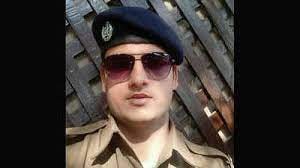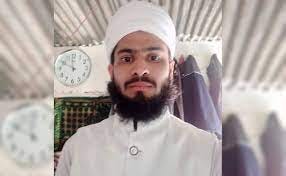Edited by Helena Malikova
In a moving train, a railway police officer opens fire. The first casualty is his senior officer. He then proceeds to brutally shoot down three Muslims while he walks through various coaches of the train, trigger-happy, identifying visibly Muslim targets including an impoverished bangle seller. After shooting his fourth victim, the railway police officer, Chetan Singh, stands next to a profusely bleeding body of a Muslim man and proceeds to give a speech invoking Pakistan: “If you want to live and vote in Hindustan [India], I am telling you, it’s only Modi and Yogi, these two people, and your Thackeray (Bal Thackeray)
Some of the passengers film this derangement on their smartphones, others whisper, some laugh, while others are mute spectators, seemingly acquiescent to a new normality in a new India. Singh invokes Prime Minister Narendra Modi and his Hindu nationalist Chief Minister of the northern state of Uttar Pradesh, Yogi Adityanath. He speaks the language of prime-time news debates in India where broadcasters and panelists use Pakistan, and the terms terrorism and fundamentalism, as pejoratives for Muslims.
This act of terror took place against the backdrop of routine yet hateful speech by Prime Minister Modi’s handpicked ministers and lawmakers, including his minister for the northeastern state of Assam, Himanta Biswas. Biswas is one of the many star campaigners of Mr. Modi’s majoritarian ideology. A week prior to the train shooting Biswas had blamed Muslims for inflation and price rise in India. In a speech laced with communal slurs, Biswas said, “Miya Muslims have their roots in Bangladesh. Miya Muslims have been increasing the rates in Guwahati, while the vegetable prices are lower in rural areas. Today most of the vegetable sellers, rickshaw pullers, bus drivers, Ola-Uber drivers are Miya Muslims. Local Assamese youth should compete with them and snatch these job.”
The number of poor, disgruntled, unemployed youth is on the rise. Post-pandemic India, where the rich are getting richer, offers little consolation to those who’ve been left out. Making the Hindu majority population in India feel like victims in their own country come as a handy trick: hate of Muslims fans the fires of resentment and animosity for the “other”.
The murder of three Muslims on the train by a railway police officer was not a result of overnight outrage or anger. It was a result of slow-burn othering. The animosity created through forwarded messages on family WhatsApp groups; the hatred on our film screens; the everyday demonizing seen on our news channels; the distorted history the government is putting into our textbooks; the language of impunity at dharm sansads (religious gatherings) and hate rallies where cops play silent observers.

Chetan Singh is every man on Twitter and Instagram who asks for Muslims to be wiped out like their “Mughal forefathers”. He is that young boy at the Love-Jihad hate rally with a saffron flag asking for the “Abdul” to be shown his place. Chetan Singh is the filmmaker who uses blood-curdling scenes in his blockbuster film to depict the image of the savage Muslim.
He is each of these except with a gun and the will to translate his hate into action with the belief that he will get away with it. In a country where those accused of lynching Muslims in hate crimes are garlanded by a Cabinet minister and where the gang rapists of Bilkis Bano (the face of the 2002 anti-Muslim pogrom ) are freed on the 75th year of Indian independence, Chetan Singh has every reason to expect to be seen as a hero in a country reveling in the language of resentment and hate.
During the same week, in August a mosque was burnt down. A 26-year-old Imam from the mosque is last heard on a video asking for Hindu-Muslim unity. He was killed in a mob attack while the mosque was ablaze. And this is just an hour away from Prime Minister Modi’s residence in New Delhi.

(https://www.thequint.com/news/nuh-haryana-violence-gurugram-mosque-on-fire-mob-attackers)
Meanwhile, village and municipal councils in the state of Haryana, which neighbors New Delhi, have passed resolutions aimed at barring Muslim traders from entering their villages.
While the Supreme Court and the Chief Justice of the Supreme Court of India have set strict guidelines instructing the public authorities to act against instances of hate speech, the government of the day seems not to care.
A cursory search of reports of hate crimes against Muslims is a telling indicator of what Indian Muslims have come to witness every single day: street lynchings; calls to violence; beards chopped off in public; trumped-up criminal charges for so-called love Jihad; attacks on those serving halal food; wearers of the hijab blocked from education. The list is unending. At this point a man can be arrested for just being himself, a Muslim, practicing his faith in the world’s largest democracy with the third-largest Muslim population.
2023 is a year all eyes are on India, as the G20’s rotating presidency moves to India from Indonesia. It could have been the perfect moment for India to assert its importance and Global South leadership. Yet, Prime Minister Modi and those in power around him posture about “Vishwaguru politics” — projecting Mr. Modi as a strongman who has solutions to global issues. But how can a leader who shies away from the plight of his own country and who is unable to put his own house back in order be expected to offer global solutions, including to the war on Ukraine?
In Mumbai, the financial capital of India, Lifesize posters of the G20 summit dominate many open spaces and walls of the city. Each poster carrying the image of Prime Minister Modi is accompanied by the slogan, “Mother of Democracy hosts G20”. But not far from where these posters have been plastered divisive hate rallies frequently are underway. Hindus are asked to remain “alert” to the devious plans of Muslim neighbours. Muslim houses are demolished with the help of excavators and bulldozers from BJP-administered states — a form of punishment often meted out to Muslims who’ve spoken out against injustices they’ve already suffered.
There is some scrutiny of this apparent criminality. The Punjab and Haryana High Court have asked the BJP-run state government if the demolition of Muslim houses is part of the ethnic cleansing of Muslims. “The issue also arises whether the buildings belonging to a particular community are being brought down under the guise of law and order problem and an exercise of ethnic cleansing is being conducted by the State.” (https://www.livemint.com/news/india/ethnic-cleansing-by-state-punjab-and-haryana-hc-questions-nuh-demolitions-11691491070649.html)
But such attempts to chip away at the culture of impunity face long odds, particularly in a country where state capture of the media is so advanced.
Prime-time television debates in India are hostage to Modi’s political ambitions. Programming is suffused with the message that India under Modi is on the cusp of a never-before-seen golden age. We’re told he is a leader with extraordinary powers to whom the world will turn for answers.
Meanwhile, a majority of the country is fed a media diet of imagined victimhood at the hands of the migrants, refugees, and Muslim “invaders”. Can it, therefore, be any surprise that this majority refers to anyone denouncing human rights abuses and genocidal impulses as part of a “break-India” gang? Imaginary stories that previously circulated on Facebook pages and family WhatsApp groups have now been mainstreamed in the mass media. Every critic, and any person with a contrary opinion, any opposition, is accused of being funded by George Soros and having an agenda to destabilise the nation.
More than anything else, the despair of the ordinary Indian Muslim stems from the apathy and indifference of the ordinary Indian — it can be a neighbor, a friend, a colleague — who effectively gaslights him or her every single day. Indian cricket celebrities take the knee in solidarity with the “Black Lives Matter” movement in America but they pretend all is well when an apartheid-style call goes out in their neighborhood to hound out all Muslims.
I hear some well-meaning friends asking me to “move on” and see the brighter side. They tell me, “Look at the economy, look at the respectability of the Indian passports. Indians have truly arrived, we are in Silicon Valley, we are in Hollywood, we are in the White House.”
Indian Muslims have been dehumanized to the point that even their right to protest against atrocities is seen as some sort of criminal defiance or “thanklessness” seen, perversely, as insulting Hindus. Indeed it is astonishing to see two India’s on my social media pages. One in which celebrities, influencers, Bollywood filmmakers, and the chatterati talk about their successes, pose with billionaires, attend art soirees and wine tastings, and discuss the latest vegan recipes. These posts co-exist with genocidal calls that leave their Muslim neighbors wondering if they need to leave a country that no longer seems to want them or those who look like them.
The railway police officer who killed three Muslims on the train identified his targets through the visible markers: the skull cap, the beard, the clothes. “It could be any one of us” family members in Muslim households are whispering to each other. The government of India seems to have decided this brand of politics has served it well. One can only expect it to intensify in the lead-up to the general elections in 2024.
At this point, however, it is not just the brazenness of the Modi government’s sanctioning of hate that so deeply concerns Indian Muslims. The indifference of those who were meant to stand by them, with them, and who refuse to acknowledge their plight, let alone try to fix it, are just as wounding.
Our humiliation is labeled as a “boring victimhood complex” and our fears are dismissed as paranoia. Popular culture has not just invisibilized us, it makes sure to caricature us and our faith in blockbuster films to make us look ungrateful, or villainous, or to make us the butt of jokes for comic relief.
As James Baldwin rightly surmised more than fifty years ago: “There are days—this is one of them—when you wonder what your role is in this country and what your future is in it. How, precisely, are you going to reconcile yourself to your situation here, and how you are going to communicate to the vast, heedless, unthinking, cruel white majority that you are here? I’m terrified at the moral apathy, the death of the heart, which is happening in my country. These people have deluded themselves for so long that they really don’t think I’m human. And I base this on their conduct, not on what they say. And this means that they have become in themselves moral monsters.”
Like many Indian Muslims, I am looking for hope during one of the worst periods in our history. But all I have for now is the criminal silence of those who once loved me and made me feel included in the celebration of this beautiful country of mine.
As India celebrates its 76th independence day today, I am a witness to the dying embers of my hopes. I feel unwanted in a country I have loved as my own, and feel I have lost.

